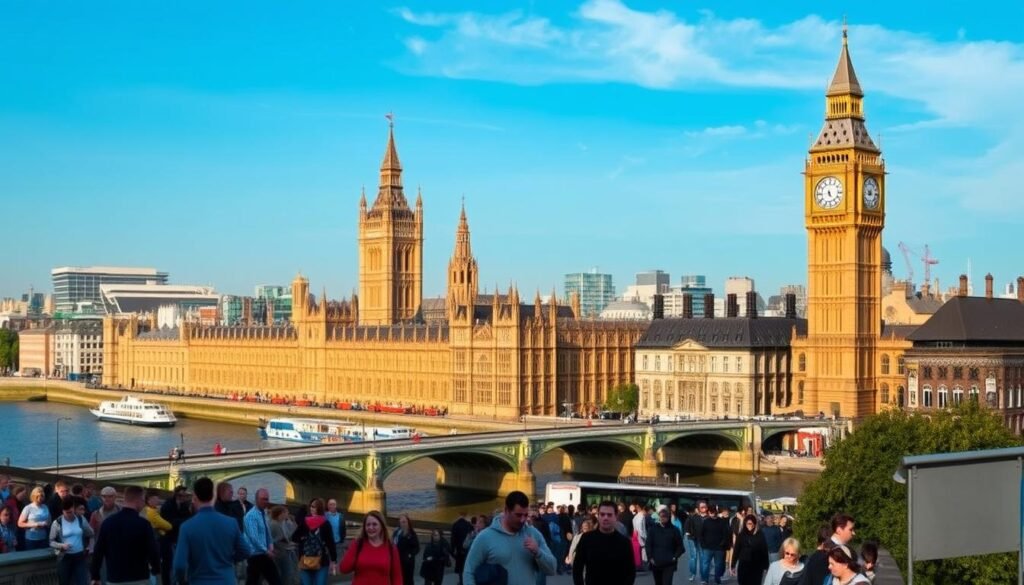Surprising fact: major events like Wimbledon and Royal Ascot can double nearby hotel rates during summer, yet January and February often show the lowest prices of the year.
I set out to answer the single biggest planning question—when’s the best time to visit London—by weighing weather, crowds, events, and prices so you can plan your city break with confidence.
I’ll show why April–May and September–October often hit the sweet spot with pleasant weather and lighter crowds. Late November into December turns the city into a festive wonderland with big light displays and markets, while July tends to be the warmest and sunniest month.
For value seekers, January and February offer big savings, though January has the most rainy days and February includes a busy school half-term. I also map how headline events and seasons shape availability across months, and I recommend first-timers plan at least four full days.
Key Takeaways
- Summer events drive up demand and rates.
- Spring and early autumn balance weather and crowds.
- Late November–December is best for festive lights and markets.
- January–February offer the deepest savings if you avoid school holidays.
- July is warmest and sunniest; October–December bring the most rainfall by total.
How I think about the best time of year to visit London
I plan trips by weighing a few practical trade-offs. I start with weather because mild days and long light shape how much I walk and which outdoor sights I can squeeze in.
I next check crowds and prices. Summer (June–August) brings packed transport and higher hotel rates; schools break in July and neighborhoods feel busier. Spring gives blossoms and smaller lines. Autumn serves cozy pubs and golden parks. January–February often offers the deepest savings, though I avoid the February half-term if I can.You can learn more about best-time-to-visit-new-zealand.
Balancing choices
- I scout events I care about—Wimbledon or Chelsea—and decide if they add value or chaos.
- I plan flexible days and pack layers for the fickle British sky.
- I time weekday stays to dodge weekend crowds in the West End and at big museums.
Finally, I match my energy and goals to the month. That simple checklist helps me pick the right time year without overbuying tours or losing hours in queues.
best time to visit london: my quick answer for 2025
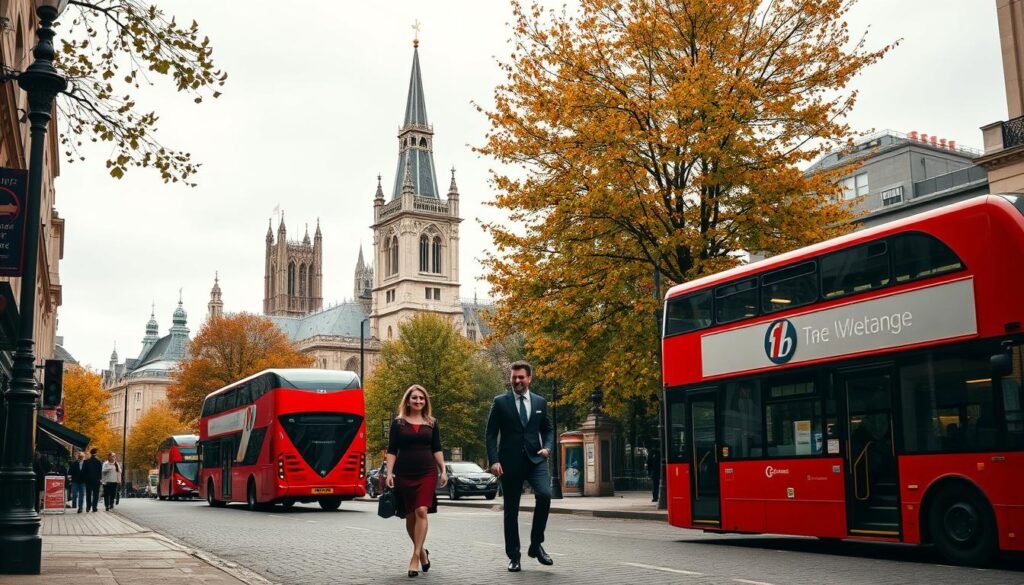
For planning clarity in 2025, I narrow choices to a few clear windows that match different priorities. Below I give short, actionable picks so you can lock dates without overthinking. Each pick balances weather, crowds, and value.
For great weather and fewer tourists: April–May and September–October
Spring brings blossoms, mild days, and smaller lines at museums. I favor April–May and September–October for longer daylight and easier restaurant bookings. These months let me enjoy parks and riverside walks without the summer crush of tourists.
For peak festivities and lights: Late November–early December
Lights on Oxford and Regent Street switch on in mid-November and Christmas markets open toward late November. I aim for late November into early December for festive displays with less of December’s peak crowds and packed fares.
For the lowest prices: January–February (avoiding school breaks)
January and February are the quietest months and offer the best deals on flights and hotels. I avoid the February half-term and book early if my trip overlaps any holiday. When deals matter most, that winter window is where I look first.You can learn more about best-places-to-visit-in-japan
- If you want my short answer for 2025, pick April–May or September–October for balance.
- For festive magic without peak chaos, aim late November–early December.
- For strong deals, target January–February while steering clear of school breaks.
When I need booking tips, I check availability and lock shows and afternoon tea early; for more planning help see my detailed guide on time visit london planning.
London by season: spring, summer, autumn, winter
I break the year into four clear seasons so I can match weather, crowds, and costs to my plans. Below I describe how each season shapes parks, events, and the feel of the city.
Spring (March–May)
In spring I chase wisteria and cherry blossoms through the Royal Parks. Days are milder and hotel availability is usually better than in summer.
Summer (June–August)
Summer brings long daylight, outdoor concerts, Wimbledon and Royal Ascot. Expect the highest prices and the heaviest footfall in the busiest months.
Autumn (September–October)
Autumn offers crisp air and golden parks. With schools back, attractions feel calmer and pub visits after walks become a highlight.
Winter (November–February)
Winter means festive markets, ice rinks, and world-class theater. January and early February often deliver top-value hotel and flight deals.
- Pack layers — London’s weather changes fast.
- Plan indoor backups like museums or shows for rainy hours.
- Choose neighborhoods by season: park-adjacent in spring, central in winter.
Crowds and prices: when hotels, flights, and attractions peak or dip
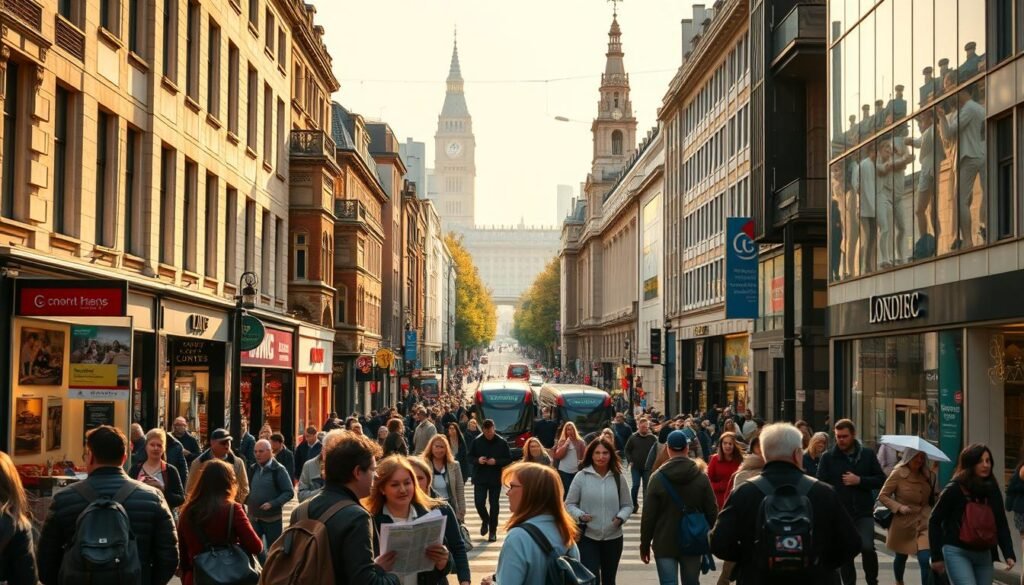
Crowds and price swings shape nearly every decision I make when booking a London trip. I check demand windows first, then slot my dates around them.You can learn more about best-time-to-visit-spain
High season: June–August, plus December holidays
June through August is the obvious peak. Hotels and flights climb, and tourists pack transit and museums.
December brings another surge. Festive markets and light displays fill calendars and push rates up fast.
Shoulder seasons: March–April and mid-September–October
These months often give me the best mix of lower lines and fair prices. I can book restaurants and tours without stress.
Low season: January–February (watch for school breaks)
January and February offer the deepest savings, though I avoid the February half-term if possible. Off-peak deals on hotels can be significant.
- I plan around high season—June through August—when hotels and flights are priciest and popular sites jam with tourists.
- December holidays add another peak; many timed-entry slots vanish quickly.
- I use shoulder months for easier reservations and lower crowds at major attractions.
- I track UK school breaks (February half-term, Easter, late July–early September, May and October) since they spike local demand.
- For the quietest stays I book January–February and still reserve in-demand tickets early.
- I aim for midweek museum visits and pick well-connected, less touristy neighborhoods to save both money and travel time.
| Season | Typical demand | Cost impact | Practical tip |
|---|---|---|---|
| High (Jun–Aug) | Very high — lots of tourists | Hotels & flights peak | Book guides and shows early |
| Festive (Dec) | High — holiday crowds | Rates surge around events | Reserve timed entries ahead |
| Shoulder (Mar–Apr, Sep–Oct) | Moderate — lighter crowds | Better prices, easier bookings | Enjoy midday museum visits |
| Low (Jan–Feb) | Low — fewer tourists | Big hotel discounts | Avoid school breaks for best value |
Weather, rainfall, daylight, and what that means for your plans
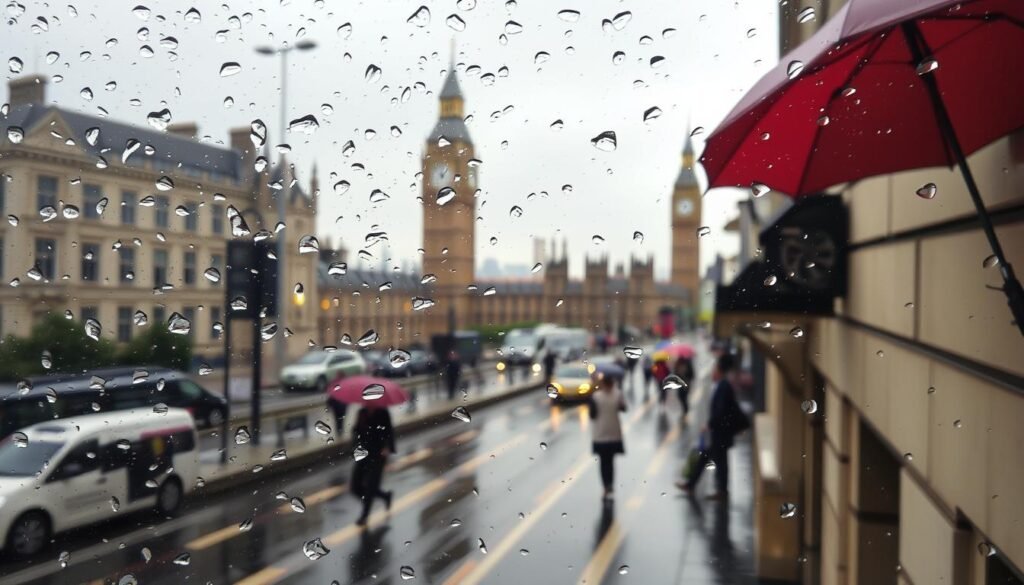
A few data points—sunlight, rain frequency, and seasonal highs—guide how I schedule outdoor time. I use those facts to decide when to push for parks, riverside walks, or indoor museums.
Temperatures by season
July is the warmest month on average, so I expect the highest temperature and plan shade breaks. June and May follow closely and often offer long, pleasant afternoons for walking.
Rainfall reality
The heaviest totals fall in October through December, so I budget extra indoor plans then. January often records the most rainy days, even if total rainfall is lower.You can learn more about best-time-to-visit-cancun
Sunshine and daylight
July leads in sun hours, with June and May not far behind. I front-load outdoor sightseeing during late spring and summer light and save museums for overcast stretches.
- I pack a lightweight waterproof jacket, compact umbrella, and breathable layers.
- I carry a refillable bottle for warm afternoons and plan river walks in the shade.
- I swap in West End matinees or markets when a shower moves through.
Weather here is famously changeable, so I stay flexible and check a short-range forecast the day before major outdoor plans. For a quick seasonal overview, see this seasonal weather guide.
Month-by-month highlights to plan your visit
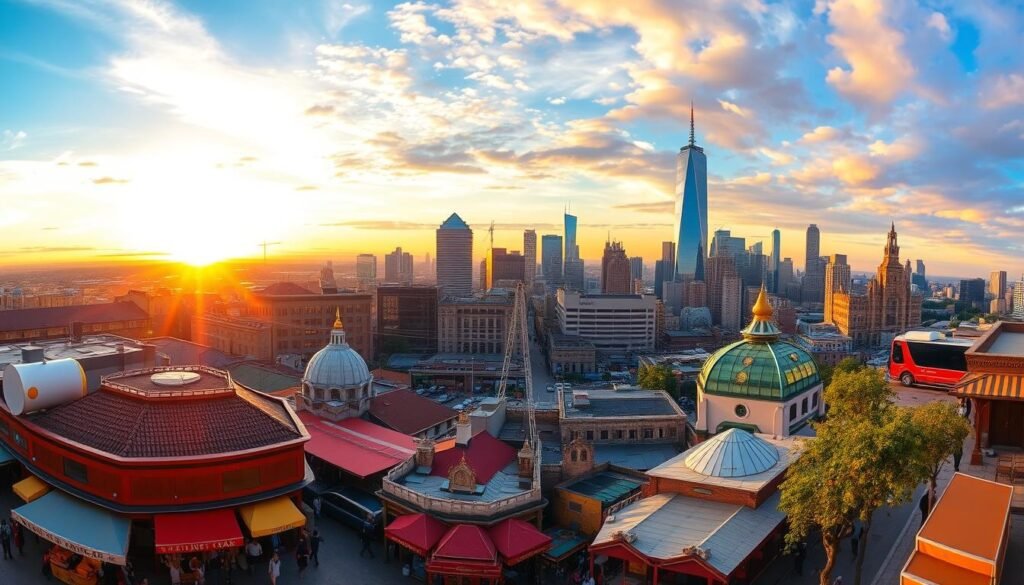
Each month brings a different mood in the city, so I sketch quick notes that help me lock dates and plan days around major events and local rhythms.
January–February
I hunt for bargains in January with winter sales and the New Year’s Day Parade. February brings Chinese New Year festivities and Kew’s Orchid Festival.
Why I go: quieter museums, lower rates, and good shopping windows.
March–April
First blooms appear across Kew Gardens and the Royal Parks. Easter events and the London Marathon fill specific days, so I book exhibits in advance.
May
May centers on the Chelsea Flower Show and long daylight for parks and canals. I often add Little Venice canal walks and extra garden-hopping into a single day.
June–July
June hosts Taste of London, West End Live, and Pride. In July I try for Wimbledon or enjoy big-screen screenings, then lean into outdoor concerts and picnics.You can learn more about best-places-to-visit-in-mexico
August
Notting Hill Carnival dominates August, with family-friendly activities and a perfect day for a peaceful trip to Oxford, Windsor, or the Cotswolds.
September–October
September eases crowds and highlights Totally Thames and Fashion Week, making day trips especially pleasant. October brings fall color, the Film Festival, Frieze, and Halloween vibes.
November–early December
Bonfire Night kicks off the late-year calendar. Late November through early December switches on the big lights and opens markets like Winter Wonderland and Somerset House ice rink.
- Tip: I mark the exact event dates before booking so I get the right days without surprises.
- Plan: match a few must-see events with flexible hotel nights for the smoothest trip.
Christmas lights and markets: the most magical time to visit London
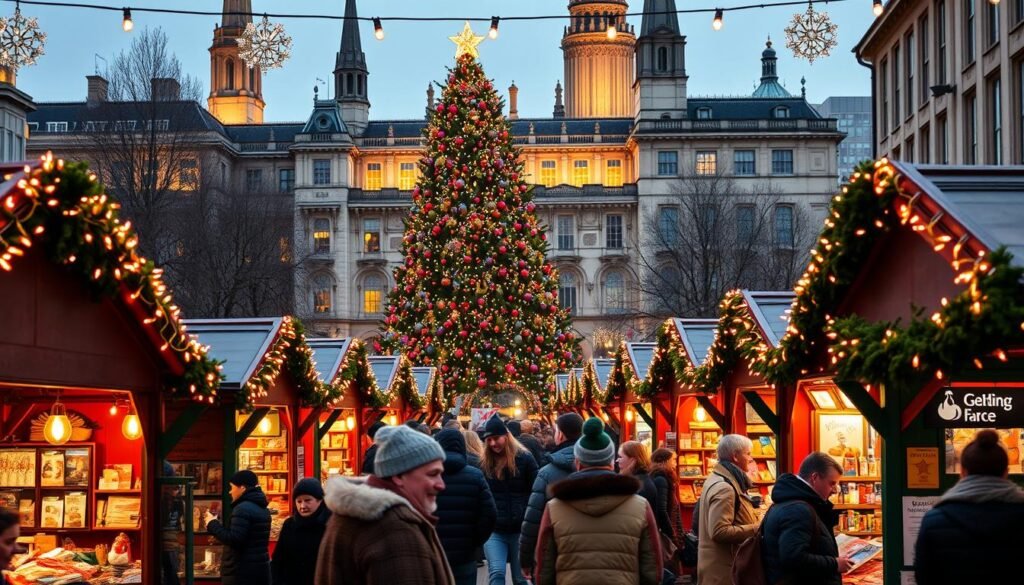
I love how mid-November light switch-ons turn ordinary streets into a walking route of small surprises. Major displays on Oxford Street and Regent Street usually flip on in the second week of November, and that sparks a chain of evening strolls I always plan for.
When lights switch on: Oxford, Regent, and nearby routes
I build an evening circuit that starts at the Oxford and Regent switch-ons, then moves through Carnaby and Covent Garden. Those short walks stack the glow and save transit time.
Markets and ice rinks: marquee experiences worth timing
Christmas markets and ice rinks open toward the end of November. I head to Hyde Park Winter Wonderland and the Somerset House rink soon after they open to enjoy atmosphere with fewer crowds and better photo spots.
How I time my trip for festivities without peak crowds
My rule: aim late November into early December for full festivities with lighter crowds than late December. I book timed entries, pick midweek evenings for strolls, and reserve a nearby cozy pub for warmth after a long night outdoors.
- Pack: warm layers and waterproof boots.
- Walk central routes to avoid long transit waits.
- Reserve tickets early for marquee installations.
West End, museums, and big events: timing your culture fix
![]()
My cultural days hinge on syncing big-ticket shows and quiet gallery hours for a smooth, packed itinerary.
Summer spectacles: Wimbledon, Royal Ascot, open-air theater
Summer brings headline sports and outdoor arts that reshape the city rhythm. Wimbledon and Royal Ascot in June–July make booking essential; hotels and guides fill fast.
I lock West End tickets early for summer blockbusters and pair them with an open-air night at Regent’s Park for variety and fresh air.
Tip: schedule big events around daytime sightseeing so you aren’t rushing across town.
Quieter culture days: shoulder seasons for galleries and tours
In spring and autumn I find galleries far calmer. The National Gallery, Wallace Collection, and the V&A feel easier to enjoy without crowds.
I add a behind-the-scenes tour when availability improves. I alternate large museums with small gems, then finish with a West End show or fringe performance.
- Arrive at opening or mid-afternoon to dodge peak hours.
- Reserve special exhibitions and guided tickets in advance.
- Bundle culture days with nearby dining to cut travel time.
For planning around major annual events, I check calendars early so my museum bookings and theater nights align with the season and my sightseeing goals.
Best time to visit London by traveler type
![]()
Different kinds of travelers need different rhythms—so I plan the schedule around people, not the calendar.
Families with kids
I favor spring and late-summer weekdays for gentler weather and longer daylight. Those months mean easier lines at attractions and more park playtime.
Tip: mix interactive museums with outdoor play spaces and short transport legs to keep kids happy.
Couples and honeymooners
Shoulder months—March–April and mid-September–October—offer quieter streets and more intimate walks along canals and in parks.
Why I pick them: thinner crowds make dining and sightseeing feel more romantic and relaxed.
Budget travelers
I look to November and January–March, stacking midweek stays for lower rates and snagging discounted theater tickets.
Pro move: book special experiences like afternoon tea or a river cruise midweek for better deals.
Shopaholics
Late June–early July has major sales, while December delivers festive windows and seasonal shopping energy.
I adjust trip length by traveler type: first-timers need at least four full days, while return visitors can plan themed mini-breaks.
- I tailor sightseeing pace to attention spans and transport ease.
- I plan special experiences midweek to secure better times and prices.
Packing and layering: what I wear in each season
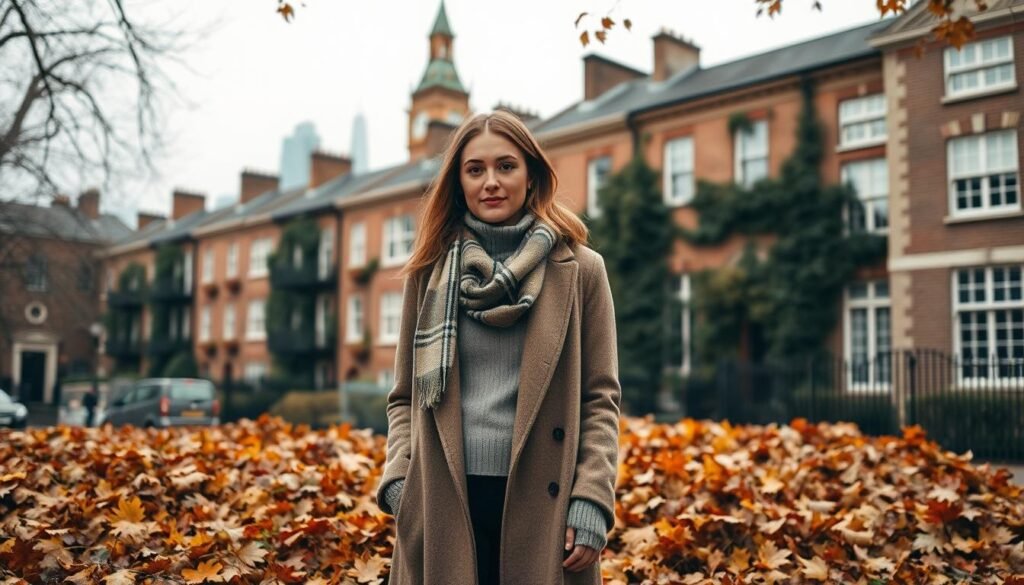
Packing for this city means planning for surprises in the weather. I keep items that mix and match so I can adjust at any point during the day.
Spring and autumn essentials
In spring and autumn I rely on breathable layers and a lightweight waterproof jacket. Comfortable shoes are a must for cobblestones and long walks through parks.
I also pack quick-dry shirts and an extra pair of socks so a sudden shower doesn’t ruin a planned walk.
Summer carry-ons
For summer I choose light layers and sunscreen. I always bring a refillable bottle for the many public fountains and a small portable fan for the Underground on warm days.
Even after sunny afternoons, I add a smart layer for cooler evenings in the summer months.
Rain-ready any month
Rain can come at any moment, so I keep a compact umbrella and waterproof boots in my day pack.
A small crossbody bag frees my hands for photos and helps me move on busy platforms with less fuss.
| Season | Key items | Why it helps |
|---|---|---|
| Spring/Autumn | Breathable layers, waterproof jacket, comfy shoes | Adapts to cool mornings and warmer afternoons; good for parks |
| Summer | Light layers, sunscreen, refillable bottle, portable fan | Keeps you cool on hot days and on the Tube |
| All year | Compact umbrella, waterproof boots, extra socks | Prevents a short shower from derailing your plans |
For a detailed checklist and outfit ideas, see my guide on what to wear.
Trip length and timing logistics I swear by

A well-timed arrival and a sensible departure save hours and lower stress on a city break.
How many days to plan: at least four full days for first-timers
I advise at least four full days for a first trip. That gives you time for top sights, a museum or two, and an evening show without rushing.
I plan arrivals around express trains from Heathrow or Gatwick to maximize sightseeing minutes. I group museums, markets, and neighborhoods into daily clusters to cut Tube time.
- I book key tour and timed-entry tickets first, then add meals and park time.
- I avoid peak school holidays and rush hours for long cross-city moves.
- I keep one flexible half-day to pivot for rain or extend a favorite walk.
| Logistic step | Why it matters | Practical tip |
|---|---|---|
| Arrival routing | Saves transit hours | Use Heathrow/Gatwick express trains |
| Daily clustering | Reduces Tube transfers | Plan sights by neighborhood |
| Built-in buffer | Handles weather and delays | Reserve one flexible half-day |
For focused planning, search my planning notes for “time visit london” and adapt the schedule to your pace.
Conclusion
I narrow choices by what I want each day to feel like: long walks, calm museums, or lively markets. For balance I favor April–May or September–October for pleasant weather and moderate crowds.
Late November into early December gives the city real sparkle with fewer peak crowds. January–February often delivers the strongest value if I avoid school breaks. July is usually the warmest and sunniest month, and rainfall rises from October through December; January records many rainy days.
I recommend at least four full days for a first trip so you can pace museums, shows, and parks without rushing. Plan indoor culture for showers and outdoor icons for clear windows.
My bottom line: pick April–May or September–October for balance, late November–early December for sparkle, and January–February for value. Book peak events early, favor midweek, and build a flexible plan that suits your experience of the city across the seasons.


